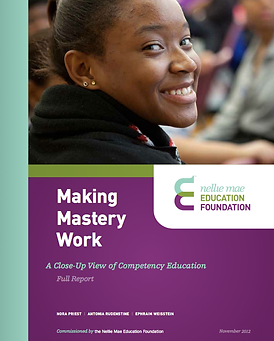
Personalized Learning
the push for personalized learning
Personalized Learning is the tailoring of pedagogy, curriculum and learning environments by learners or for learners in order to meet their different learning needs and aspirations. Typically technology is used to facilitate personalized learning environments through blended, flipped, virtual, or even game based learning opportunities.
the push for personalized outcomes
The goal of Personalized Learning should be to prescribe the learning of each student with content, standards, outcomes, activities, and pacing that is specific to each student. Personalized Learning is the acknowledgement that every student is different with different needs and abilities.

In a Personalized Learning environment, students should share how they learn best, what they enjoy learning about, their challenges, aspirations, goals, hobbies, passions, curiosities, and activities. This in conjunction with personalized reporting of their individual progress towards competence and mastery of standards should serve as a Rich Student Model for data collection / evidence.
the push for personalized DATA

the push for personalized pathways
Personalized learning pathways, often called multiple pathways or flexible pathways, allow educators to expand learning for students while also addressing their distinct learning needs, interests and career aspirations. Personalized pathways are also premised on the idea that learning accomplishments should be recognized, rewarded or valued consistently and equally regardless of whether students learn in a school, outside a school or online.


WHAT DOES PERSONALIZED LEARNING LOOK LIKE?
A SAMPLE RIcH STUDENT MODEL
A Rich Student Model, or learner profile, collects data to describe the ways in which a student learns best. A comprehensive learner profile includes information on student interests, learning preferences and styles, and differences related to gender, culture and personality. It also might include information on student learning strengths, needs and types of supports that have been successful in the past. A learner profile needs to be dynamic, as individual learners are constantly growing and changing. Rich Student Models should allowthe ability for students, parents, and staff to update.

STANDARDS BASED GRADING AND REPORTING
Standards-based approaches to grading and reporting address these grading dilemmas in two important ways. First, they require teachers to base grades on explicit criteria derived from the articulated learning standards. To assign grades, teachers must analyze the meaning of each standard and decide what evidence best reflects achievement of that specific standard. Second, they compel teachers to distinguish product, process, and progress criteria in assigning grades.
Sample standards based report cards
SEVEN QUESTIONS TO ADDRESS IN DEVELOPING STANDARDS BASED REPORT CARDS
(THOMAS GUSKEY AND JANE BAILEY IN DEVELOPING STANDARDS BASED REPORT CARDS)
1. What is the purpose of the report card?
2 How often will report cards be completed and sent home?
3. Will a specific report card be used for each grade level or will a more general report card be used across several grade levels?
4. How many reporting standards will be included for each subject area or course?
5. What specific reporting standards will be included at each grade level or in each course?
6. Will standards be set for the grade level or for each marking period?
7. What specific process and progress standards will be reported?










